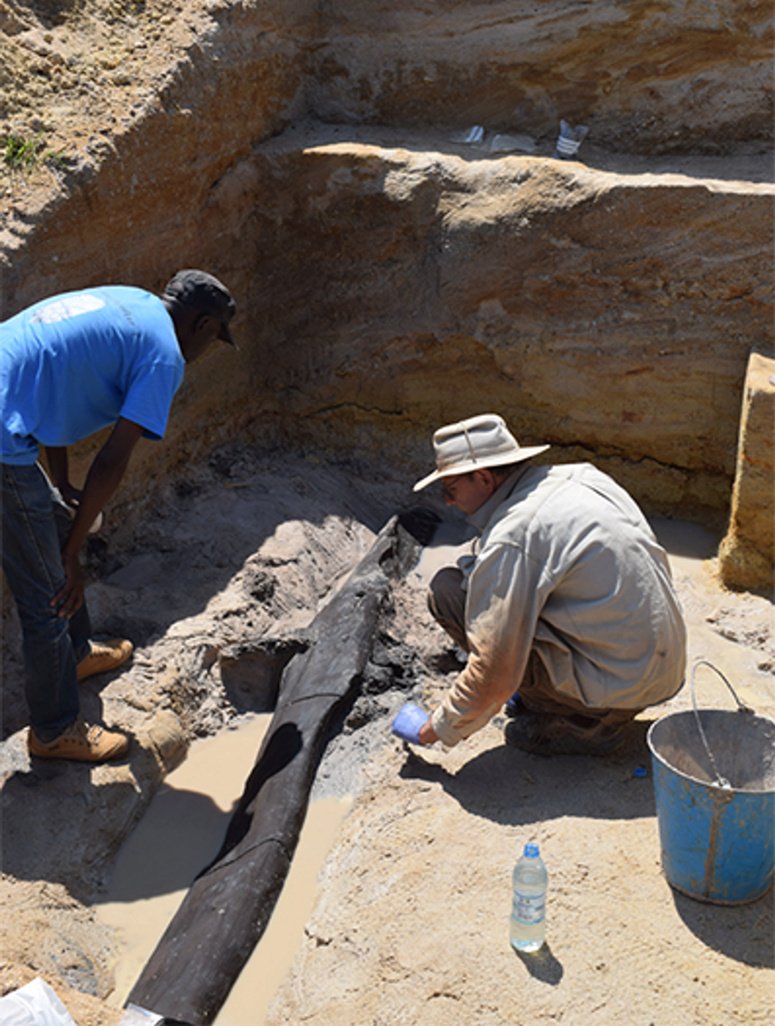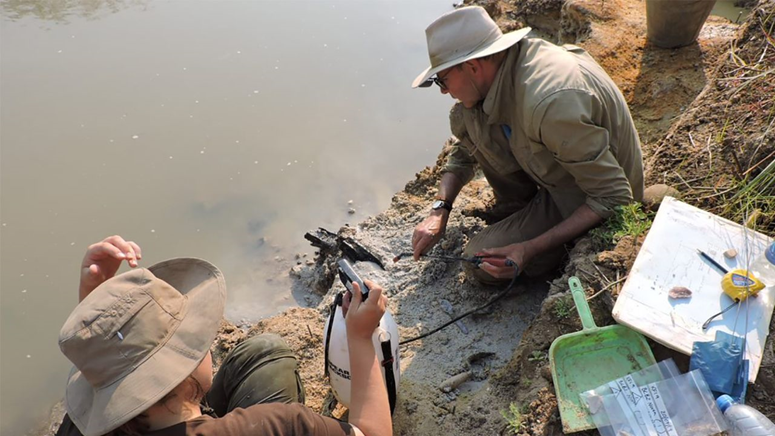Buildings and their construction preceded the appearance of man

Kalambo Falls, which rises to 235 meters on the border between Zambia and Tanzania, formed part of a distinctive prehistoric area that witnessed human activities (Deep Roots of Humanity Project and University of Liverpool/The Independent)
The oldest one was built half a million ago by an extinct human species, which changes the history of the development of technology
In South Africa, British and African archaeologists have discovered evidence of the world's oldest man-made structure, built by a human species that became extinct half a million years ago.
The building was made of wrought wooden beams, and may have been constructed to form a raised path through marshes, or to serve as a raised wooden platform in the middle of an area of wetlands, and perhaps as part of a hunting base or a place for slaughtering animals for consumption.
Scientists discovered the place in flooded land in the north of the Republic of Zambia [in southern Africa], and it is at least twice as old as any other known man-made structure.
Most likely, this discovery will change archaeologists' long-held notions about the development of human technology and early cognitive abilities. [Technology refers to the purposeful and intelligent use of tools].

In fact, the discovered elevated track or high wooden platform constituted a small part of the presence of prehistoric man on the south bank of the Kalambo River. On that structure, a few hundred meters away, scientists found two natural wonders that have always aroused great interest: a waterfall 235 meters high and a valley 300 meters deep.
It is not unlikely that the waterfalls and the unusually diverse local terrain are indirectly responsible for attracting an ancient human species that lived by hunting and gathering fruits to that region, including “engineers” and carpenters who can be considered the oldest in the world in the field of construction.
Directly at the source of the waterfalls, there is a large, fertile flood plain that includes swamps, lakes, small waterways, and riparian forests, in addition to the main river. Forests, in addition to other tree species, covered the slopes of the hills adjacent to that plain.

Conversely, directly downstream, the river flows through an impressive three-mile (4.83 km) valley with its native rainforest, which thrives in part because of the waterfall's spray. And three miles away, The river flows into one of the largest lakes in Africa, Lake Tanganyika, which is brimming with fish and has always attracted large herds of animals.
In fact, both environments attracted different types of animals and contained different plants, fruits and nuts, which may have attracted those early humans.
So far, archaeologists have found two parts of the wooden structure: a 1.4-meter-long piece of the tree trunk and the section connected to its root, and prehistoric carpenters modified both parts.
After cutting the tree trunk, the builders changed its shape so that it became pointed at both ends. Then they drilled a U-shaped incision on his side, 13 centimeters long. In the next stage, they placed the tree trunk horizontally over the butt of the tree, which they had carved and changed its shape in order to Ensure that the top 20 centimeters can fit perfectly into the U-shaped notch of the horizontally carved tree trunk.

The 1.4 meter long beam was made from members of a human species that became extinct half a million years ago (Deep Roots of Humanity Project and University of Liverpool/The Independent)
Thus, when the modified tree trunk was placed in this way, the builders made sure that it was completely “secured”, like a key in a lock, at the top of the tree trunk, ensuring that the wooden path or platform remained about 20 centimeters above the swamp.
A few meters away from the building, scientists also found a large wooden wedge, also dating back to about half a million years ago, which may have been used to space the rafters.

Archaeologists also found a variety of cutting, chopping, and scraping tools, all made of stone, in addition to a possible stove used to cook food.
In conclusion, the humans who lived in that part of the Earth in the prehistoric stage were members of a now extinct species called Homo heidelbergensis, which at that time had already settled most parts of Africa, Western Asia, and Europe, and its numbers doubled and its spread expanded to between 600,000. And 300 thousand years ago.
However, about 300,000 years ago, Homo heidelbergensis died out, perhaps as a result of competition with other newer, more advanced human species, specifically Neanderthals and us (Homo sapiens).

Archaeological research has continued over the past four years, and has been undertaken by archaeologists and other scholars based in the United Kingdom, Belgium and Zambia from the Universities of Liverpool, Aberystwyth, Royal Holloway and Liège, the National Museums Council of Zambia, and the National Conservation Authority. On the country's national heritage.
The scientific journal Nature published an academic report on the project last Wednesday.
The project director, Professor Larry Parham, from the Department of Archaeology, Classics and Egyptology at the University of Liverpool, is supervising an international research project called “Deep Roots of Humanity,” which includes conducting investigations in the Kalambo Falls area. According to Parham, “This discovery helps change the way
"Our thinking about human species that have long been extinct."
In a related context, the specialized dating of the discoveries was carried out by experts at the British University of Aberystwyth. They used light-emitting dating techniques, which reveal the last time minerals in the sand surrounding finds were exposed to sunlight, to determine their age.
According to a researcher at Aberystwyth University, Professor Geoff Doller, “In this great era, determining a date for discoveries is an extremely difficult task. But emitted light dating allows us to arrive at dates dating back to a very ancient era, and then move on to collecting information about sites that provide "We have a glimpse into human evolution."
Source: websites

